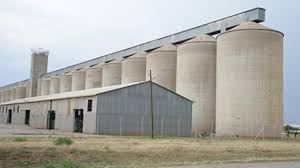Innscor Africa Q3 F25: Green shoots, real returns, and strategic maturity
HARARE — As Zimbabwe’s largest diversified light manufacturing group, Innscor Africa has long been a bellwether of the country’s industrial and economic health. With exposure across staple foods, protein, beverages, packaging, and agriculture, its performance offers a unique lens into both the challenges and opportunities of operating in a volatile macroeconomic environment.
Now, against the backdrop of its 2024 full-year results and its Q3 F25 trading update, a clearer picture emerges—one of deliberate transformation, cautious but tangible progress, and a renewed focus on volume-led, consumer-centric growth.
Innscor exited F24 having absorbed one of the most structurally disruptive years in recent memory. Headline numbers looked strong—13.2% volume growth, US$910 million in revenue, US$86 million in EBITDA, and operating cash flow of over US$106 million—but behind these figures were a series of complex dynamics that tested the group’s strategy, cost structure, and agility.
Perhaps the most disruptive shift came in fiscal policy, where the VAT status of basic commodities was changed from “zero-rated” to “exempt.” This meant Innscor could no longer reclaim VAT on inputs like flour, packaging, and raw materials—despite not charging it on the final product. It quietly inflated production costs and distorted margins, particularly in mass-market staples like bread and maize meal.
To compound this, VAT was added to protein products, while excise duty was introduced on sugary beverages, two categories central to Innscor’s product portfolio. The policy burden disproportionately affected formal, tax-compliant producers—leaving them exposed to cheaper, informal competitors not facing similar levies.
These moves challenged not just profitability, but also strategic pricing models, and forced Innscor to adopt a more surgical approach to cost control, product positioning, and procurement.
The group also battled steep increases in electricity and fuel costs, alongside inconsistent power supply—forcing several divisions to invest in solar energy. Input inflation, especially in imported commodities like rice, dairy ingredients, and packaging materials, further stressed the cost base.
Despite this, Innscor pressed ahead with a US$72 million investment programme across new categories (pasta, snacks, biscuits), capacity enhancements, and vertical integrations aimed at localising input supply chains.
These weren’t just survival moves. They were bets on a future where scale, efficiency, and control over sourcing would be the only real insulation against Zimbabwe’s unpredictable policy environment.
Fast forward to March 2025, and the seeds planted in F24 are beginning to bear fruit—though not without friction.
In the Bakery segment, the strategy of affordable pricing, strong distribution, and increased automation is paying off. Volumes grew 10% over the nine-month period, with further upside expected from the new Harare automated bread line, due to come online imminently.
At National Foods, the group’s largest and most diverse business, volume growth was remarkable—22% year-on-year. It tells a story of category resilience and the success of investment-led strategy:
Maize volumes soared 58%, driven by El Niño-induced shortages and reduced household grain stocks.
Snacks jumped 52%, supported by expanded ZapNax and King Kurl lines.
Flour grew 21%, despite a slow start.
Pasta, now produced locally, is gaining “pleasing traction” in both urban and rural markets, a notable win for import substitution.
Even the Downpacked category, previously hammered by high rice prices and VAT, is recovering, helped by India lifting its rice export ban and National Foods lobbying for VAT exemptions on rice.
This suggests that Innscor’s scale advantage , its ability to invest ahead of the curve, is starting to pay off, even as others struggle to react.
After a muted start to F25, the protein segment is showing signs of revival. Colcom’s fresh pork volumes are up 19%, driven by improved pig weights and increased deliveries. However, processed meats are still 10% behind due to weaker consumer demand and increased informal competition.
Triple C’s upstream expansion is progressing, and deliveries to Colcom are set to grow into FY26.
Meanwhile, Irvine’s posted 4% growth in poultry and 11% in eggs, though margins remain tight—highlighting that scale is not yet enough to offset margin pressure in proteins.
The most underappreciated play here may be AMP’s “Texas Meats” network, which is quietly building brand trust and product visibility in a fragmented protein retail space.
The protein segment is perhaps the clearest case of formal operators being punished for their compliance—yet Innscor is holding the line by doubling down on upstream efficiency, genetics, and controlled retail.
Prodairy continues to impress, with a 27% volume jump, led by the “Revive” (Maheu and dairy blends) and “Life” (fresh milk and butter) brands. These products resonate with budget-conscious consumers and benefit from Innscor’s control over milk supply via Mafuro Farming, which also posted a 14% milk volume increase.
Probottlers, however, is suffering from the Sugar Excise Duty, which has dampened demand in the cordial and CSD categories. The “Fizzi” and “Bally House” lines both declined, despite strong recovery from water and sports drinks (“H2go” and “Activ8”).
This is a textbook case of regulatory risk altering product economics—and speaks to the need for a nimble portfolio strategy, where new categories can quickly absorb shocks in others.
Natpak, the Group’s packaging arm, posted a 9% volume increase, with notable gains in Flexibles (+24%) and Rigids, driven by rising beverage sector demand. These divisions are now approaching optimal capacity, proving the foresight of previous expansions.
Nutrimaster, however, posted a 16% volume decline, largely due to erratic rainfall patterns and delayed planting. Yet the outlook is positive: a strong winter wheat season and growing demand for “OptiChem” agrochemicals could restore momentum.
What makes Innscor’s Q3 update noteworthy isn’t just the numbers—it’s how strategy is aligning with market structure.
Volume-first logic is deeply embedded. In low-margin, mass-market economies like Zimbabwe, the battle is won on cost, price, and access—not luxury or exclusivity.
Category diversification protects earnings. When one segment (e.g. CSDs) falters, others (e.g. pasta, dairy blends) step in.
Operational maturity is visible. From new biscuit and pasta lines to upstream pig breeding and automated stockfeed plants, Innscor is becoming vertically self-reliant.
Policy engagement matters. The VAT and Excise challenges won’t resolve through lobbying alone, but Innscor’s positioning as a formal tax-paying employer strengthens its long-term argument.
The real test ahead? Whether this investment cycle—spanning three years and tens of millions in capital—can now shift from volume recovery to margin regeneration and cash return.
Innscor Africa has come through one of its most structurally challenging periods with its core strategy intact, volumes growing, and several new categories gaining traction. What lies ahead is less about expansion and more about consolidation, efficiency, and influence.
If government policies stabilise, Innscor stands to set the blueprint for resilient, formal sector manufacturing in frontier economies. But even without that tailwind, its current trajectory suggests a company that is finally shaking off reactive survival—and leaning confidently into strategic control.
In a market where many still play defence, Innscor is building offence—patiently, expansively, and with an eye on value, not noise and the US$1 billion topline now possible at F25.-finx











